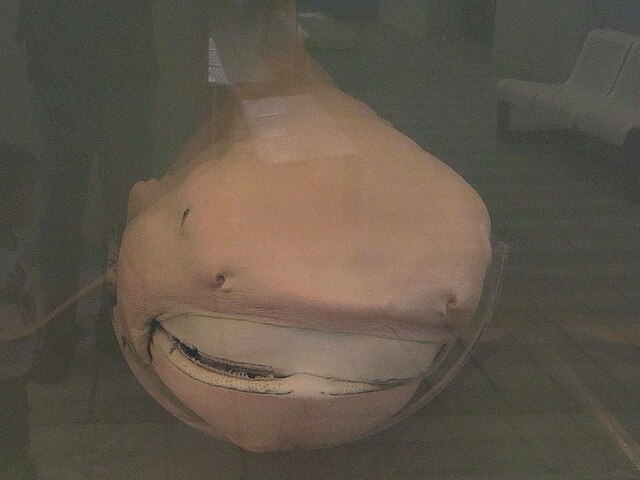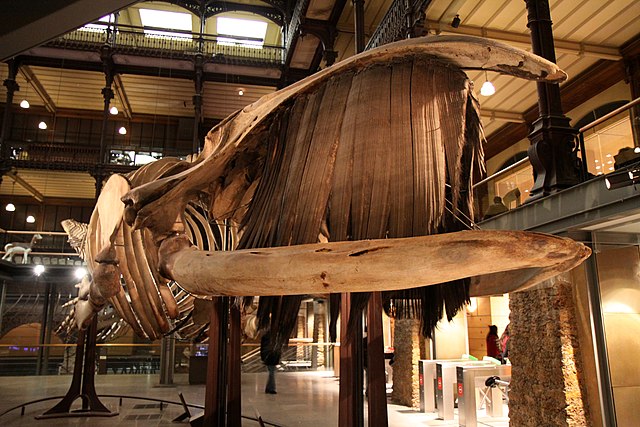The megamouth shark is a species of deepwater shark. Rarely seen by humans, it measures around 5.2 m (17 ft) long and is the smallest of the three extant filter-feeding sharks alongside the relatively larger whale shark and basking shark. Since its discovery in 1976, fewer than 100 specimens have been observed or caught. Like the other two planktivorous sharks, it swims with its mouth wide open, filtering water for plankton and jellyfish. It is recognizable from its large head with rubbery lips. The megamouth is so unlike any other type of shark that it is usually considered to be the sole extant species in the family Megachasmidae, though some scientists have suggested it may belong in the family Cetorhinidae.
Megamouth shark
Frontal view of a preserved specimen at Marine World Uminonakamichi
Individual captured off the coast of Mie Prefecture in 2016
Worldwide sightings of the megamouth shark as of 2012
Filter feeders are a sub-group of suspension feeding animals that feed by straining suspended matter and food particles from water, typically by passing the water over a specialized filtering structure. Filter feeders can be sessile, planktonic or nektonic, and some extant animals that rely on this method of feeding are clams, krill, sponges, baleen whales and many fish. Some birds, such as flamingos and certain species of duck, are also filter feeders. Filter feeders can play an important role in cleaning water, and are therefore considered ecosystem engineers. They are also important in bioaccumulation and, as a result, as indicator organisms.
Filter basket of a mysid
Mouth plates of a Baleen whale
Tube sponges attracting small reef fish
An undulating live Aurelia in the Baltic Sea showing the grid in action.








